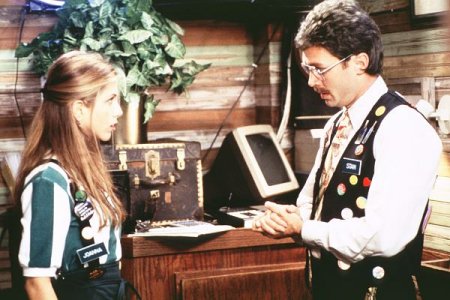Given my current blog series and the EPIC series we’re doing (Encounters with Jesus), I couldn’t have come across this book at a more opportune time!
 Imaginary Jesus opens with the author, Matt Mikalatos, at his favorite Portland vegan restaurant with none other than Jesus. They’re chatting about life when a big, smelly guy named Pete walks in, introduces himself and asks Jesus, “What do you want with my friend Matt here?”
Imaginary Jesus opens with the author, Matt Mikalatos, at his favorite Portland vegan restaurant with none other than Jesus. They’re chatting about life when a big, smelly guy named Pete walks in, introduces himself and asks Jesus, “What do you want with my friend Matt here?”
Apparently Jesus’ answer isn’t good enough because Pete punches him square in the face and then chases him out of the restaurant.
Matt quickly discovers that Pete is none other than the Apostle Peter and “Jesus” isn’t really Jesus at all, but an Imaginary Jesus. And if Matt wants to meet the real Jesus, he has to find and face down his Imaginary Jesus. Along the way, he meets a whole host of imaginary Jesuses, from Men’s Retreat Jesus (whom he must pacify using Braveheart quotes), Magic 8 Ball Jesus (who only gives a few vague, stock-answers to every question) and Political Power Jesus (who gets into a fight with Hippie, Peacenik Jesus).
And as hilarious as Matt’s adventure is, it’s also choke-full of biting critiques of American Christianity at its best and worst. Matt’s critiques never come across as cruel because he consistently lampoons himself before anyone else, and always with clever, self-effacing humor.
Besides, who hasn’t wanted to see King James Jesus negotiate a hostage situation?
If you’ve tried to follow Jesus for any length of time, then you need to read this book. At its heart, it’s all about how often and easily we trade the real Jesus – the Jesus we meet in the Gospels – for someone who agrees with us, who won’t challenge us.*
Imaginary Jesus is no joke, and I guarantee you’ll read it more than once and pass it on to friends. You’ll want to tell them all about your favorite moments. Mine is the inner-tube race down the side of a mountain between Calvinist Jesus, Armenian Jesus and Open-Theist Jesus (though Matt is shrewd enough not to label them that).
Bottom line: A great summer read that gets you thinking while you’re laughing – it’s narrative theology at its best!
*I’m ashamed to admit that Matt got me several times with some of the Jesuses he encountered. I was so pleased with what this or that Jesus said I was certain he had to be the real deal. Curses!




 Precious sweeps us along on her journey, touching on the disembodiment our culture creates. Some of the most painful moments occur when Precious envisions her ideal Self – skinny, pretty and white, and when she escapes her body as her father rapes her, imaging herself far off and away, detached from the prison of her body.
Precious sweeps us along on her journey, touching on the disembodiment our culture creates. Some of the most painful moments occur when Precious envisions her ideal Self – skinny, pretty and white, and when she escapes her body as her father rapes her, imaging herself far off and away, detached from the prison of her body.
 The story in and of itself is beautiful, gripping, hilarious and tragic. Were this all the film gave us it would still be an incredible viewing experience. But we get to travel with the toys as they learn what it means to move on, to change and, yes, to outgrow our childhoods. We learn how important it is to have a purpose and the incomparable power of a community working together. We see the beauty of friendship and the promise of redemption. We laugh till our sides hurt and shriek in horror at Big Baby.
The story in and of itself is beautiful, gripping, hilarious and tragic. Were this all the film gave us it would still be an incredible viewing experience. But we get to travel with the toys as they learn what it means to move on, to change and, yes, to outgrow our childhoods. We learn how important it is to have a purpose and the incomparable power of a community working together. We see the beauty of friendship and the promise of redemption. We laugh till our sides hurt and shriek in horror at Big Baby. Clichés become cliché for a reason, and “Practice makes Perfect” is no different. I grew up playing baseball, and you could always tell the teams that practiced from those who didn’t. My team usually had brutal (to a 10-year-old) 2 hour practices that included such glamorous activities as running laps, playing catch and fielding ground-balls. Over and over and over. And over. But of course we became a better team for it. Activities that first required concentration and effort became second-nature. We gained more endurance, became a stronger, more focused team for it. This is the beauty of practice for a sports team.
Clichés become cliché for a reason, and “Practice makes Perfect” is no different. I grew up playing baseball, and you could always tell the teams that practiced from those who didn’t. My team usually had brutal (to a 10-year-old) 2 hour practices that included such glamorous activities as running laps, playing catch and fielding ground-balls. Over and over and over. And over. But of course we became a better team for it. Activities that first required concentration and effort became second-nature. We gained more endurance, became a stronger, more focused team for it. This is the beauty of practice for a sports team. awkward space in your message. Running through your material three to four times
awkward space in your message. Running through your material three to four times  I was reminded of the prayer rock last Monday when we found out that the (in)famous “Touchdown Jesus” in Monroe, OH had been struck by lightning and burned to the ground (check out the YouTube footage of the conflagration in progress).
I was reminded of the prayer rock last Monday when we found out that the (in)famous “Touchdown Jesus” in Monroe, OH had been struck by lightning and burned to the ground (check out the YouTube footage of the conflagration in progress).

 Last week, I wrote about using
Last week, I wrote about using 
 God, and was executed for it. But for all the supposed safety measures we’d put into place, the general feeling that last month of school was one of confusion and chaos rather than safety and order. Because no one could answer convincingly that singular, burning question everyone was asking: Why did Eric and Dylan do it?
God, and was executed for it. But for all the supposed safety measures we’d put into place, the general feeling that last month of school was one of confusion and chaos rather than safety and order. Because no one could answer convincingly that singular, burning question everyone was asking: Why did Eric and Dylan do it? I was immediately surprised by how many myths Cullen debunked. Eric and Dylan weren’t a part of the Trench Coat Mafia. The killings weren’t retaliation for bullying. Cassie didn’t stand up for Jesus (she didn’t have the chance; the boys just killed her. Her testimony actually came from another girl who had already been shot, but still claimed to believe in God.) Probably most surprising was the profile Cullen created of each of the boys. Dylan was a sad, depressed loner who – according to his journals – desperately wanted to be loved. Eric was a clinically-diagnosable psychopath who lied to everyone around him and dreamed of exterminating the entire human race.
I was immediately surprised by how many myths Cullen debunked. Eric and Dylan weren’t a part of the Trench Coat Mafia. The killings weren’t retaliation for bullying. Cassie didn’t stand up for Jesus (she didn’t have the chance; the boys just killed her. Her testimony actually came from another girl who had already been shot, but still claimed to believe in God.) Probably most surprising was the profile Cullen created of each of the boys. Dylan was a sad, depressed loner who – according to his journals – desperately wanted to be loved. Eric was a clinically-diagnosable psychopath who lied to everyone around him and dreamed of exterminating the entire human race.